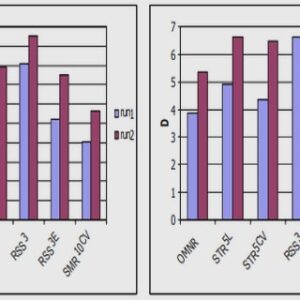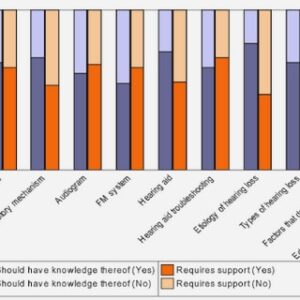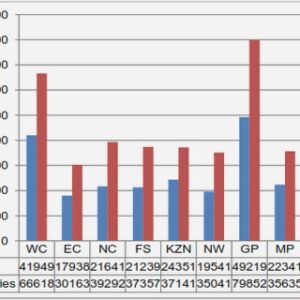(Downloads - 0)
For more info about our services contact : help@bestpfe.com
Table of contents
1 Introduction
1.1 Background
1.2 Problem Statement
1.3 Thesis Objectives
1.4 The GEOSUD SDI
1.5 Thesis Structure
2 SDI & Information
2.1 The Concept of Information / Communication
2.2 The Information Theory
2.3 The Economics of Information
2.4 The Geospatial Information (GI)
2.5 The Spatial Data Infrastructures (SDIs)
2.5.1 The Concept of SDIs
2.5.2 The Economic Challenges of SDIs
2.5.3 The SDI Management
2.5.4 The Economic Valuation of Geospatial Information via a SDI
2.5.5 The valuation of SDIs
2.5.6 The SDI Market Stability
2.6 References
3 Summary of Papers
3.1 Paper I – Spatial Data Infrastructure Management: A twosided market approach for strategic re ections
3.2 Paper II – How much would you pay for a satellite image?
Lessons learned from a French Spatial Data Infrastructure
3.3 Paper III – Making the most of \heterogeneous » information by using Blackwell and Entropy theories: A decision support policy applied to forests’ clear-cut control
3.4 Paper IV – Identifying the economic impacts of a Spatial Data Infrastructure
3.5 Paper V – Examining market stability using the Records theory: Evidence form French Spatial Data Infrastructures
4 SDI Management
4.1 Introduction
4.2 Background literature
4.3 Spatial Data Infrastructures as two-sided market
4.3.1 The satellite imagery market
4.3.2 The image-based applications market
4.3.3 Network externalities & Non-neutrality of prices
4.4 Case study: the GEOSUD SDI
4.4.1 Data collection & analysis
4.4.2 Case description
4.5 Results: challenges and dynamics of the GEOSUD SDI according to a two-sided market approach
4.6 Discussion: what are the lessons to be learned?
4.7 Conclusion
4.8 References
5 SDI Economic Valuation
5.1 Introduction
5.2 Methodology
5.2.1 Description of the case study: The GEOSUD SDI users and data characteristics
5.2.2 Survey design and data collection
5.2.3 Model estimation
5.2.4 Application to the GEOSUD SDI
5.3 Results
5.3.1 Descriptive results
5.3.2 Statistical Results
5.3.2.1 Sector-by-sector analysis
5.3.2.2 Membership analysis
5.3.2.3 Volume Analysis
5.4 Discussion
5.4.1 The satellite imagery WTP
5.4.2 The satellite imagery WTP among sectors
5.4.3 The membership fees WTP
5.4.4 The HR satellite images: a place between the free MR and the VHR commercial images
5.4.5 The SDI pooling mechanisms supporting the use and access to satellite imagery
5.4.6 The satellite images meet the organizational routine concept
5.4.7 The satellite imagery as an `informational asset’
5.4.8 From an image-based towards a data streaming model
5.5 Conclusion
5.6 References
6 SDI Information Structure
6.1 Introduction
6.2 Review of classical results
6.3 General context and notations
6.3.1 Blackwell’s approach
6.3.2 Entropy approach
6.4 Case study
6.4.1 Data collection and analysis
6.4.2 Case description
6.5 Results
6.5.1 Entropy Results
6.5.2 Blackwell results
6.6 Discussion
6.7 Conclusion
6.8 References
7 SDI Economic Impacts
7.1 Introduction
7.2 L’information satellitaire et l’IDGS GEOSUD comme source de productivite et d’innovation
7.3 Methodologie de l’evaluation pour la gestion des coupes rases
7.3.1 Elaboration du questionnaire et realisation de l’enqu^ete
7.3.2 Presentation de l’echantillon enqu^ete
7.4 Details de l’evaluation et des resultats par type d’impact
7.4.1 Impacts de la production et de la fourniture des images
7.4.1.1 La valeur ajoutee generee par ADS
7.4.1.2 Les economies de mutualisation generees par GEOSUD
7.4.2 Impacts de l’usage des images satellitaires de GEOSUD au sein des DRAAF et DDT(M)
7.4.2.1 Economies de co^uts de fonctionnement
7.4.2.2 Economies de temps de travail pour le suivi des coupes rases
7.4.2.3 Impacts sur les recettes publiques
7.4.2.4 Impacts sur le reseau et la gouvernance
7.4.2.5 Impacts sur les competences
7.4.3 Impacts sur les acteurs de la liere-bois
7.5 Synthese des resultats et discussion
7.5.1 Des gains de co^ut de transaction et des eets de creation de valeur ajoutee signicatifs
7.5.2 Un appui a moyen terme en faveur de processus d’innovation ouverte
7.6 Conclusion
7.7 References
8 SDI Market Stability
8.1 Introduction
8.2 Methodology
8.2.1 SDI characteristics’|GEOSUD / PEPS
8.2.2 Satellite-images schemes
8.2.2.1 GEOSUD high resolution satellite imagery
8.2.2.2 PEPS satellite imagery: Landsat, Sentinel and SPOT
8.2.3 Data collection
8.2.4 Records theory model | general context
8.2.4.1 Classical model
8.2.4.2 Beyond iid |Yang-Nevzorov
8.2.4.3 Distribution free estimation
8.2.4.4 Goodness of t test
8.3 Results and discussion
8.4 Conclusion
8.5 References
9 Conclusions and Future Works
9.1 Conclusions
9.2 Future works




